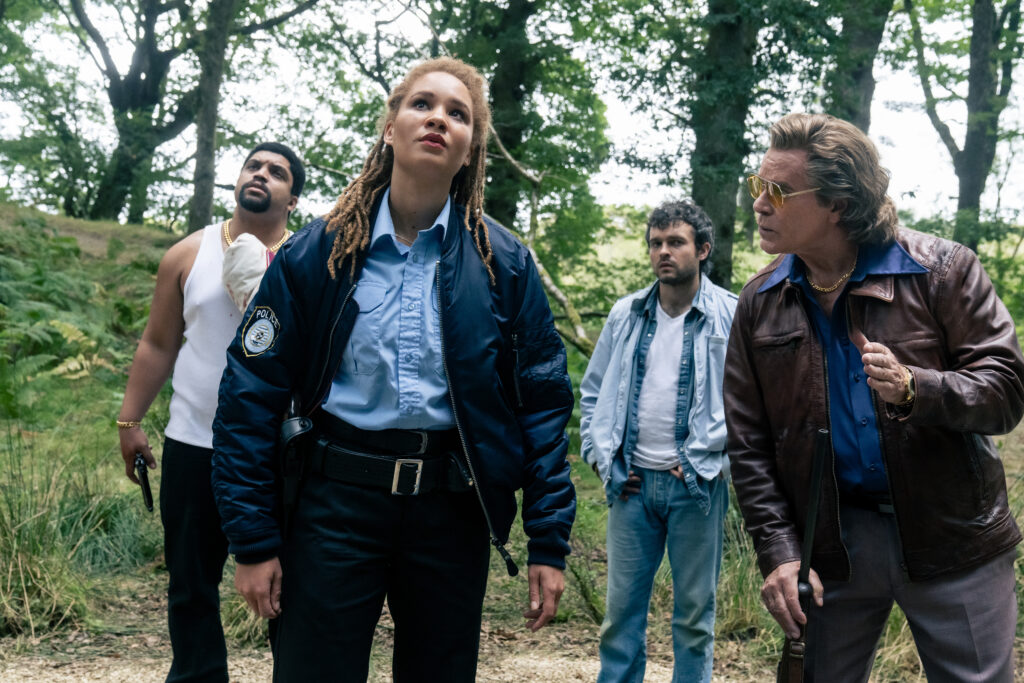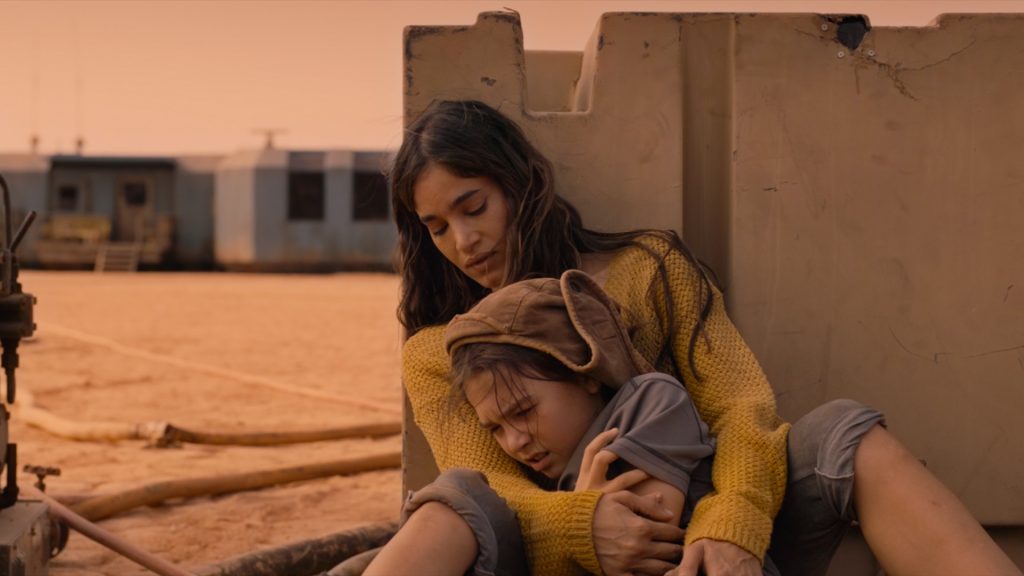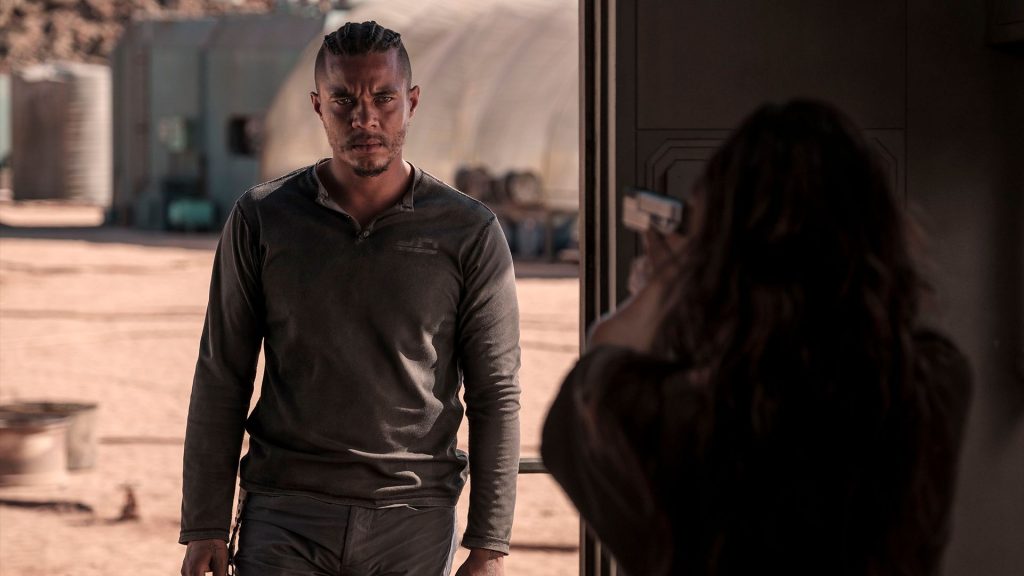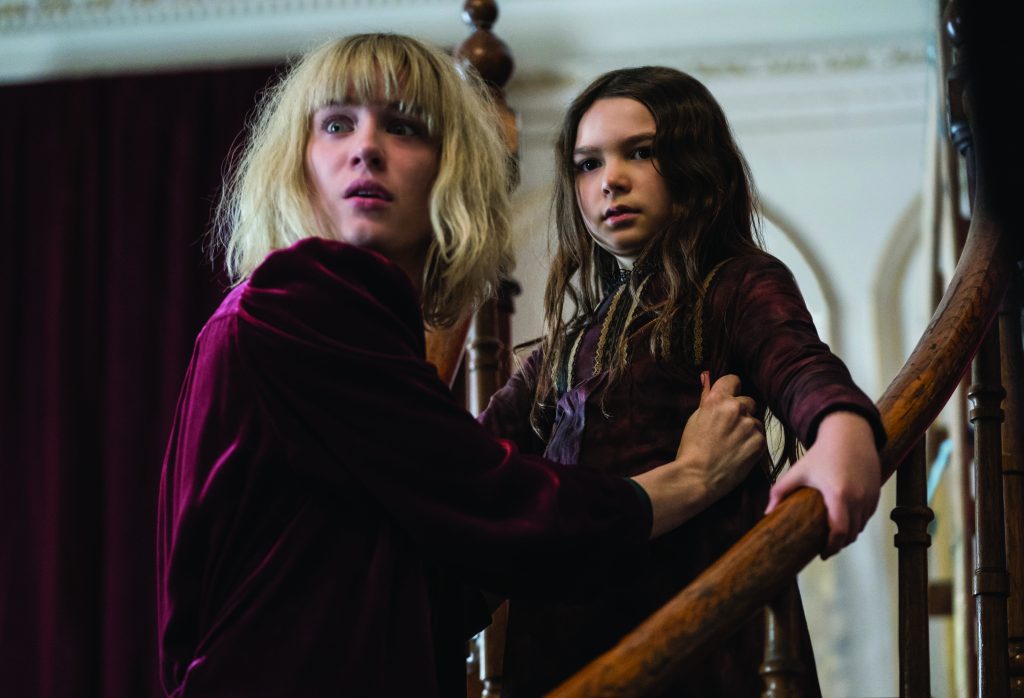November 22, 2023
by Carla Hay

Directed by Neil Burger
Culture Representation: Taking place in Michigan, in 2002 and in 2022, the dramatic film “The Marsh King’s Daughter” (based on the 2017 novel of the same name) features a predominantly white cast of characters (with a few African Americans and one Native American) representing the working-class and middle-class.
Culture Clash: Twenty years after her father was imprisoned for kidnapping her mother, a 30-year-old woman, who has tried to erase him from her life, finds out that her past has come back to haunt her when he breaks out of prison captivity to track her down.
Culture Audience: “The Marsh King’s Daughter” will appeal primarily to people who don’t mind watching formulaic and ridiculous “women in peril” dramas.

It’s ironic that much of “The Marsh King’s Daughter” takes place in a backwoods marsh area, because this entire movie is a soggy mess. It starts off as a monotonous drama and devolves into a series of silly action scenes that don’t look believable. There are no real surprises in this disappointing dud, except for the surprise that some viewers might feel about how “The Marsh King’s Daughter” gets worse as the movie stumbles along to its very predictable conclusion.
Directed by Neil Burger, “The Marsh King’s Daughter” is based on Karen Dionne’s 2017 novel of the same name. Elle Smith and Mark L. Smith co-wrote the unimpressive adapted screenplay for “The Marsh King’s Daughter.” It’s more of a series of plot checklists than an engaging story that flows well. The cast members, for the most part, just go through the motions in drab performances.
The tedious first third of the movie takes place in 2002, in Michigan’s Upper Peninsula, where a reclusive family of three people are living “off the grid” in a remote wooded area near a marsh. Helena (played by Brooklynn Prince) is a 10-year-old who adores her father Jacob “Jake” Holbrook (played by Ben Mendelsohn), who teaches her the fundamentals of hunting and fishing. Jacob also has an unusual habit of giving underage Helena a tattoo every time she kills a specific animal.
Helena has a closer emotional bond with her father than she has with her mother Beth (played by Caren Pistorius), because Helena thinks that her mother is an uptight nag. “She’s always mad at me,” Helen complains to Jacob about Beth. From the beginning, it’s shown that Jacob is abusive to Beth.
Every time it looks like Beth wants to leave to go somewhere on her own, Jacob physically and roughly restrains her and prevents her from leaving. Helena witnesses some of this abuse, but she turns a blind eye to it because her father has convinced Helena that Beth deserves to be “disciplined.” Jacob is so manipulative, he has lied to Helena by saying Beth is trying to abandon them.
That’s why it should come as no surprise to “The Marsh King’s Daughter” viewers when it’s revealed that Jacob kidnapped Beth (whose last name is Ericson) about 12 years earlier and forced her to get pregnant. Helena was the result of this forced pregnancy. This secret isn’t revealed to Helena until something drastic happens.
By the end of the first third of the movie, Beth makes a daring escape with Helena, while Jacob murders an innocent ATV driver (played by Joshua Peace) during this escape. Jacob is captured, convicted, and sentenced to several years in prison. The media and law enforcement have given Jacob the nickname The Marsh King. None of this is spoiler information, since it’s already revealed in the trailer for “The Marsh King’s Daughter,” which gives away about 80% of the movie’s plot.
The middle and last sections “The Marsh King’s Daughter” take place in 2022. Helena (played by Daisy Ridley) is now a 30-year-old married mother, with the married surname Pelletier. Helena works in accounting at a local college. Beth is now deceased. It’s mentioned at one point in the movie that it took years for Helena and Beth to somewhat mend their relationship before Beth died.
Helena is deeply ashamed of who her father is, so she changed her own identity years ago. She has not told her businessman husband Stephen Pelletier (played by Garrett Hedlund) about her father and his sordid crimes. Instead, Helena has told Stephen that her father is dead. Helena and Stephen have one child together: an intuitive and curious daughter named Marigold (played by Joey Carson), who’s about 8 or 9 years old.
Helena’s world comes crashing down when Jacob escapes from being transported in a prison van and kills a few more people in the process. Jacob is determined to track down Helena, because in his warped mind, he thinks that he, Helena, and Marigold should live as a happy family in the marsh area where Helena spent much of her childhood.
Gil Birmingham has a thankless supporting role as an investigating police officer named Clark Bekkum, who was in love with Helena’s mother Beth. Clark and Beth never married, but Clark became like a stepfather figure to Helena when she was younger and when Jacob was in prison. Clark still wants to have that type of stepfather figure role in Helena’s life when Clark and Helena reconnect after not seeing each other for years. What happens to Clark in the movie is exactly what you think happens to Clark.
Mendolsohn has made a career out of playing movie villains, and he does more of the same posturing and sneering as “The Marsh King” serial killer Jacob in this tepid and uninspired drama. Ridley fails to convince during an abrupt transition when Helena goes from being a meek and introverted wife/mother to a badass action hero who thinks she doesn’t need law enforcement’s help in dealing with her dangerous father. There is so little suspense in how this story ends, “The Marsh King’s Daughter” simply exists as mindless mush.
Lionsgate and Roadside Attractions released “The Marsh King’s Daughter” in U.S. cinemas on November 3, 2023. The movie was released on digital and VOD on November 21, 2023.






